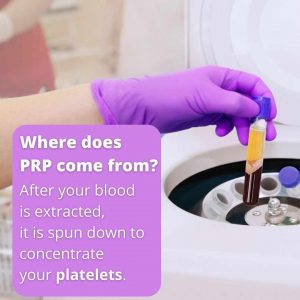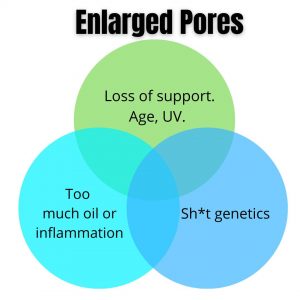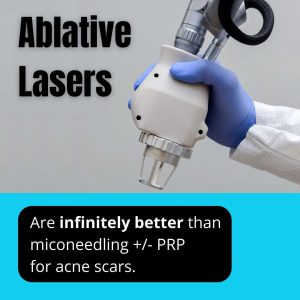At A Glance Microneedling PRP
- Best Results4-6 sessions
- Treatment Recovery1-3+ days
- Procedure Time30 minutes
- Skin SpecialistNurse, therapist
- Duration of ResultsVariable
- AnaestheticNumbing cream/gel
- Back to Work1-2 days
- Cost$-$$
Microneedling PRP
Microneedling & PRP is a favourite combination offered by many cosmetic clinics as a treatment option for wrinkles, scars & more. I do believe the ‘microneedling’ part can be effective, however addition of PRP gives marginal results at best. I do not routinely offer PRP, however it can be effective in other skin conditions such as hair loss & wound healing.
FactsFacts on Microneedling PRP
- This treatment involves the use of tiny needles to break the surface of skin
- Microneedles provides controlled injury & miniature channels in the upper skin
- PRP stands for platelet rich plasma & is derived from your own blood
- PRP has growth factors & cytokines that in theory can improve healing & stimulate new tissue including collagen
- As PRP is derived from your own blood, there are no issues in the context of allergies or contamination
- Microneedling can address skin concerns including scars, wrinkles, sun damage, enlarged pores, & stretchmarks
- 4-6 treatments are performed, 2-4 weeks apart for best results
- Read more on how I perceive platelet rich plasma/PRP
What is Microneedling PRP?
Microneedling is a broad term to describe the use of small needles to break the upper layers of skin. This ‘micro injury’ of skin results in remodelling of the lower dermis. This can increase collagen resulting in improvement of wrinkles, skin texture, and reduction of pore sizing & scars.
Microneedles can be delivered in 4 ways. The simplest is a roller mechanism consisting of 128-256 plus needles (depth varies between 0.1 to 2+ mm). These can be purchased online from eBay or Amazon for about $3 to $8 USD.
The second way of needling involves stamping or ‘derma stamp’. This provides vertical entry of needles in a stamping mode. Stamping is safer, but it is limited in the capability of treating angular areas such as the nose.
Thirdly microneedles can be delivered with a pen, called Dermapen, or Skin Pen. This is the most common mode of delivery as it is motor driven.
The fourth variation of microneedling is called energy microneedling or RFM; radiofrequency microneedling. This involves the use of insulated or non-insulated bipolar needles. RFM has the advantage of providing heat. This results in more collagen remodelling compared to ‘cold needling.’
| Type | Derma Roller | Derma Pen | Derma Stamp | RF microneedling |
| Mechanism | Rolling | Vertical needles, motor driven | Stamping Vertical Needles -predetermined depth | Vertical insulated vs non-insulated needles |
| Pros | Cheap | Fast | Cheap, safe | More collagen remodelling |
| Cons | Needle entry not vertically orientated | Dragging or poor technique can induce scars | Difficult to treat Areas such as the nose, eyelids | Expense, difficulty, patient selection |
What is PRP?
PRP is concentrated platelet cells from your own blood. It involves taking your own blood, processing it, spinning it down to give platelet cells (clotting cells) and then reinjecting or applying back to your skin after it has been micro needled. The micro wounds left following needling allows the goodness of concentrated platelets & growth factors to enter your deeper layers of skin, stimulating collagen production.
Unfortunately, the commercialisation of PRP has made this procedure an ‘upsell’ for many clinics, almost to the point of associating microneedling with, you guess it ‘PRP.’ Concentrated platelets & growth factors have been shown to improve joint pain & speed up recovery. PRP has been shown to be effective in the management of hair loss. PRP has conflicting outcomes when it comes to skin. Some cases show improvement with scarring, many cases do not. As a guide I used this extensively in the majority of scar revision procedures from 2015 to 2018.
I do believe it has extremely marginal improvements when it comes to healing times, but little or no advantage when it comes to overall outcome. Hence, I am reluctant to offer this treatment to patients however I can add this to your treatment, should you feel that your research has shown advantages. PRP is harmless, however the question is, does it add anything to the revision process?

What conditions can microneedling PRP treat?
PRP & microneedling has been reported to treat-
- Scarring including traumatic & acne scars
- Stretch marks
- Wrinkles & photoaging
- Melasma
- Pigmentation
- Dark circles
- Hair loss
- Enlarged pores
I still perform microneedling daily (reasons given below), however rarely utilise PRP. I did use this treatment heavily from 2015 to 2018 however I found it was marginally effective in reducing downtime. PRP did not contribute to overall improvement beyond the microneedling procedure. If you would like this treatment based upon your own research, you can discuss this with my clinical team @cliniccutis. Please read the relevant FAQs below in the context of skin concerns.

Is microneedling PRP a good treatment for acne scars?
Yes. Microneedling can be a good non-targeted way to address acne scars. Mild to moderate early acne scars can improve with this treatment. It is the microneedling part that works, the PRP is onselling a treatment. More on that later.
Microneedling has been shown to improve scarring by collagen remodelling in the deeper layers of skin. It can also release growth factors known as cytokines from the upper layers of skin (epidermis). A third mechanism is creating an electrical potential between the cells, leading to cell migration. There is no evidence that super deep treatments work better, however the deeper one goes, the riskier the treatment (scars, bleeding, bruising, infection).
A sensible depth is 0.25 to 1.0 mm conducted with traction & counter traction. Performed correctly, a derma roller or derma stamp can be just as effective. This can be done at home if you are careful. Most dermatologists would agree, if sensible selection of depths with good technique, the risks of scarring is remote. A sensible at home depth is 0.25 maximum.
Stamping is safer than rolling. Perform every 3-6 weeks, 6 to 8 passes depending on the number of needles.

View our Treatment Gallery
What about PRP for scar revision?
Most non-commercial dermatologists & plastic surgeons would agree that platelet rich plasma does not contribute to the improvement of scars as compared with saline (normal saline, or salt water). Personally I believe it gives marginal improvement in healing times. It is also associated with a high patient satisfaction rate as we are sprinkling ‘growth factors & goodness’ extracted from your blood. There are many conflicting studies demonstrating the efficacy & in some cases the effectiveness of PRP. Base your decision on the interpretation of the data.

So what are my recommendations? If you would like a cost-effective DIY, try microneedling at home with sensible settings. I do use microneedling in my practice, however my indication is to gain access into the upper & mid papillary layers of the skin in order to deliver proper pharmacologically active drugs, most commonly corticosteroids.
In the context of acne scars, the team @cliniccutis can provide you with microneedling, however in the context of acne scars there are better solutions including vascular lasers for red scars, lasers, & energy based microneedling, known as RFM or radiofrequency microneedling. We still do provide PRP, however we are not keen to sell this treatment in the context of scarring & rejuvenation. PRP is effective in the management of hair loss (stronger evidence).
Is microneedling PRP a good treatment for melasma?
This treatment ranks as one of the worst treatments for melasma as it can lead to melanin drop out, leading to post inflammatory dermal hyperpigmentation. The logic behind this treatment is the most illogical reasoning for the treatment of melasma. Yes, I get it, the basement membrane separating the dermis & epidermis is compromised. Yes, this can be due to photoageing & restoring BM function seems logical, but to do this with trauma, often reaching the mid to lower papillary dermis is skin suicide. We are not addressing the actual pathological process with microneedling PRP. I do agree that this treatment can improve or restore photoaging, but in the context of melasma, there are far, far, far better & safer treatments.
Subcellular settings on nano lasers, low fluence picos, or conservative Thulium laser together with vascular modification, & tyrosinase inhibitors with adequate UV protection is commonly used method. Stabbing skin with needles then sprinkling platelet extract most often leads to rebound, but also makes our job much harder as pigment is pushed deeper into the dermis.

Is microneedling PRP effective in treating dark circles?
No. Despite the popularity of this treatment, microneedling PRP is not a good choice for treating dark circles. Why? Because in many cases it can make dark circles worse! The action of microneedling breaks skin, in turn causing bleeding. This causes bruising also known as post procedure purpura. This leaves more pigmentation known as post inflammatory hyperpigmentation or PIH. The logic of microneedling PRP in the management of dark circles is illogical. As clinicians we should address the actual cause of dark circles, namely, to diagnose before treatment.
Dark circles can be due to atrophic (thin) skin, vasculature, genetics, irritant or allergic contact dermatitis or many more disorders. Diagnosis & targeted treatment should be the commonly used method of practice.
Is microneedling an effective treatment for enlarged pores?
In some cases, it can be effective, in other cases it makes enlarged pores worse. If the needle is bigger than the pore, the latter is possible. Always find a solution that is smaller than the problem itself. For large pores (diameter wise), skin needling, large diameter lasers, RFM & TCA or Phenol are appropriate.
For small diameter pores my preferred treatment is with 1927 Thulium laser via the LaseMD system, Fraxel Dual or even Clear & Brilliant. I also employ NdYag nano lasers & occasionally Pico lasers if appropriate.
At Clinic Cutis we base treatments on clinical findings and match this with appropriate treatments. We are not limited by equipment levels nor skill sets. To understand what is the ideal method to treat your pores, book an appointment with my clinical team.

Is microneedling effective for treating stretch marks?
Yes, microneedling can help stretch marks. Because the skin is so atrophic, you do not need to go so deep. DIY simple roller at home with a 0.25 mm ‘Dermaroller’ from eBay can help. See my posts @101.skin & @drdavinlim to understand how to safely perform this treatment at home. Counter traction can help. This treatment is best for old stretch marks, namely white, silvery or papery.
New stretch marks are pink, red or purple. The use of a vascular laser is preferable over microneedling as the former targets the vessels under the skin, without breaking skin. I use the V BEAM Prima & Perfecta for this job, other lasers that we employ include the 1064 Nd Yag millisecond PD in the context of laser genesis.
For cases of old stretch marks, I also employ Tixel, LaseMD, Fraxel 1927-1550 & a whole lot of other lasers & energy devices. For more information on how we approach stretch marks, book an appointment with my nurses or dermal therapists @cliniccutis
What is the evidence for hair loss?
This is where microneedling & PRP can be highly effective as adjunctive treatments for both male & female pattern hair loss. It works by stimulation of hair germ cells via the release of growth factors & cytokines.

A standard protocol consists of one session every month for three months, followed by maintenance therapy every 3 to 6 months. For more information review the dedicated page on PRP Microneedling & hair loss on this site.
Is microneedling PRP a safe treatment?
Yes, if conducted appropriately. The first step is the indication. For example, microneedling & PRP can be effective in the management of hair loss, wrinkles & in some cases acne scarring. It should not be used to treat melasma or dark circles.
Needle depths are typically between 0.25 to 1.5 mm. Device selection is important. A strong high Hz motor is required to facilitate gliding & not dragging. Technique is critical to prevent idiosyncratic scars- most frequently seen if needles are ‘dragged.’
The optimal concentration of PRP is required to ensure correct delivery of cytokines, growth factors & platelets. Too little & it is useless, too much & it could be counterproductive.

What are other treatments that specialists perform?
Can you cut grass with a pair of scissors? Yes, you can but there are far better solutions than a pair of scissors. Same applies to microneedling. I employ this treatment based upon the job. I do not employ a treatment based upon the limitations of equipment & skill sets. As stated microneedling is my preferred option for managing some scar types including thin hypertrophic scars as I want uninterrupted dermal delivery of corticosteroid in the upper and mid dermal layers.
At Clinic Cutis my team & I employ over 25 types of lasers & EBD or energy-based devices from powerful CO2 lasers to gentle Tixel, Fraxel, Clear & Brilliant, & LaseMD Ultra fractional laser systems. We add newer equipment monthly, keeping on the best & most effective solutions.
Book an appointment with my clinical team to understand what is the ideal solution for your skin concerns.
Microneedling & PRP combined: Davin’s Viewpoint
The former works well for some skin conditions whilst PRP is probably ‘upselling’ the large Coke & Fries.
I still employ microneedling in the day and age of lasers & RFM (radiofrequency microneedling). The latter provides controlled heating with microneedling and hence it generates more collagen remodelling, especially in the context of scar revision.
Lasers are much more precise, especially ‘small dot’ lasers such as Fraxel, LaseMD, Clear & Brilliant & eCO2. I prefer these treatments over microneedling – RFM when the ‘target’ or problem is small (eg pores). My preference for microneedling only is in the treatment of some types of scars, hypertrophic & sensitive keloid scars are examples. This is when I want punctate entry wounds without ‘char’ so I can deliver drugs into the deeper layers of skin.

Provided it is correctly performed, I don’t agree with the illustrations of ‘tearing’ the skin with derma rollers, once again this is in the context of depth of needles & technique. Using 0.1 to 0.25mm with adequate counter traction is a safe DIY, dragging microneedles can also result in idiosyncratic & iatrogenic scars. Possibly derma stamping is safer esp if longer needles.
As for PRP, there is so much absolute crap in the literature- especially in the context of melasma. We see more treatment worsened post inflammatory hyperpigmentation & melasma flare ups post microneedling than any other procedure. PRP has been shown to marginally improve healing times. The use for hair loss is appropriate as adjunctive management with LLEDs, Thulium, & most importantly medical therapy including finasteride, cyproterone acetate, spironolactone & topical – oral minoxidil.
Does Cutis Clinic still employ PRP? Yes, in select patients. I do not routinely offer this as I don’t like to upsell or upsize treatments. Regardless PRP still has a high patient satisfaction rate- that cannot be denied.

